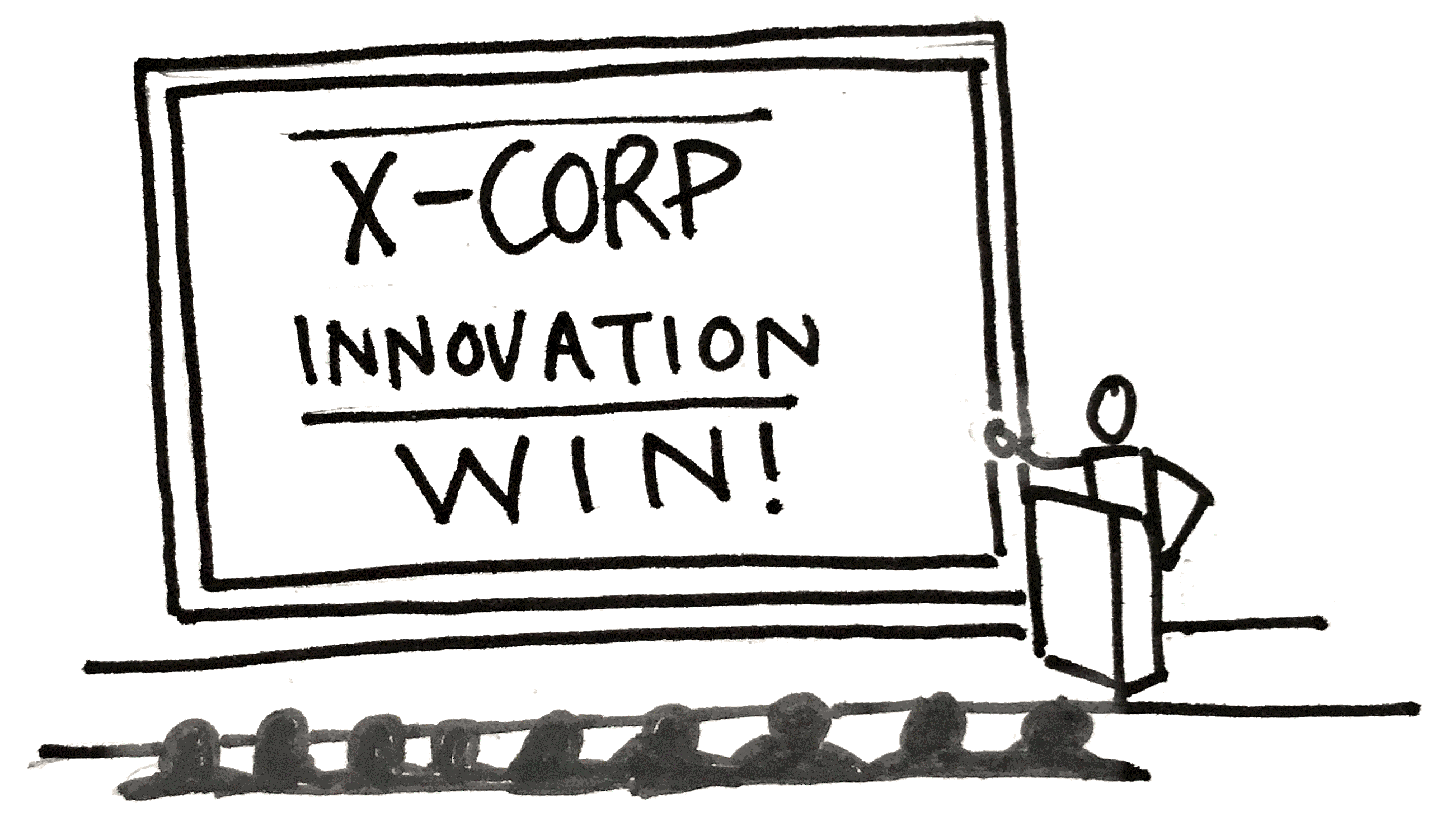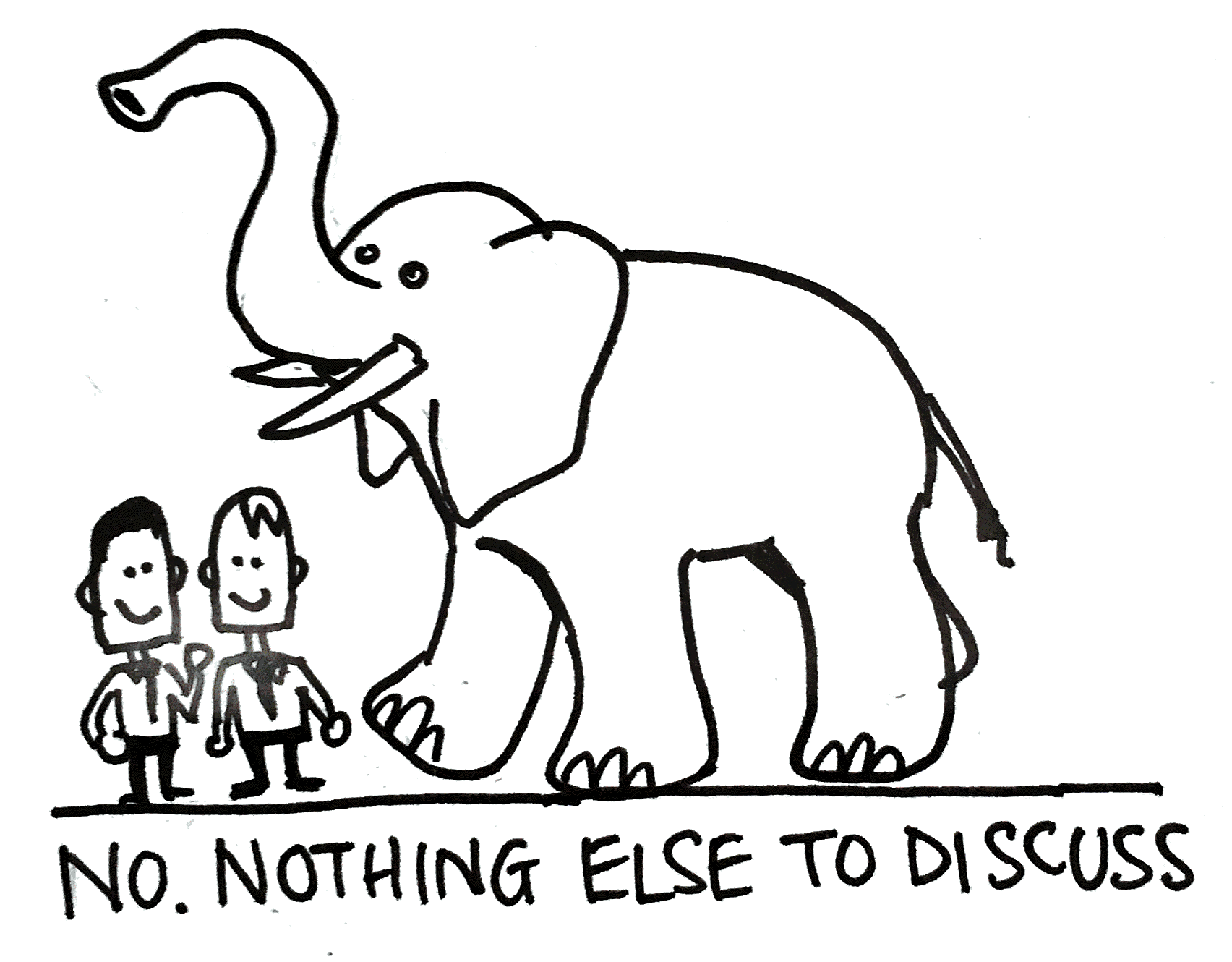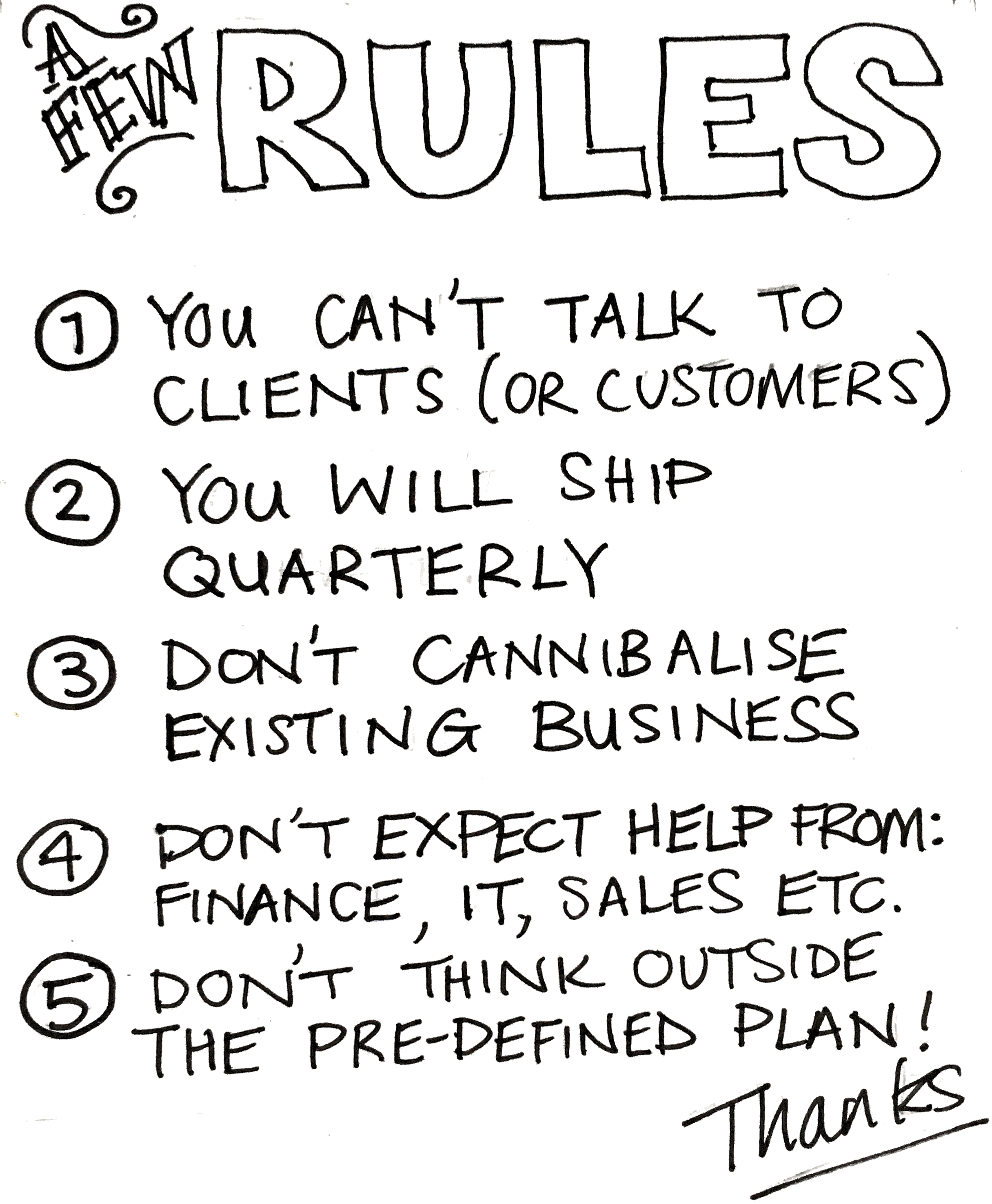Many large organisations say they want to use a Lean UX approach. In my experience, they don’t find it easy to execute in reality.
Why is this? I believe we’re not helping adoption happen – we’re not following our own advice or approach, I say we can do better.
I talked about this at UXScotland and again at UXCambridge. I promised to write the talk up as a blog post. I've decided to split this over a number of blog posts, this is the first of that series.
This blog post will cover why we're not getting large organisations adopting Lean UX the next will look at what we can do to help.
So why is Lean UX so hard for large organisations?
I’d like to start with a short story.
Your competitors appear to be innovating.
They’re talking at conferences about how successful and lean they are, how they’re innovating and iterating on new customer centric products.
The executives get scared.
What’s everyone else doing?
“Digital Transformation”, and a “Digital First Strategy”? Why aren’t we doing that?
No one points out the elephant in the room
“What is an innovative digital first strategy - what does that mean for our business?”
If you’re lucky, someone did point out the elephant, and there are some outcomes or goals defined!
The executives initiate a ‘Digital Transformation’ with a ‘Digital First Strategy’ powered by ‘innovation teams.’ Go forth and innovate…
Then – nothing happens, people are trying to start, but your business have limited or no in-house capability. The executives are informed - and take decisive action.
Consultants are hired. In Droves.
From different companies with different approaches! (And with no clear direction.)
An agile approach is adopted by the dev team.
Standups are 30 minutes long and some people are not allowed to talk as they are chickens (No one explains what a chicken is (or that it’s an outdated concept) - just that these high-level execs are chickens, and therefore can’t speak.)
No-one is entirely sure if Digital Transformation trumps existing KPIs / initiatives etc. but carry on doing anyway.
Consultants attempt to engage with and educate the executives using lots of domain specific terminology.
Innovation, resonate, customer development, minimum viable product, sprint, story points, iteration, burn down, burn up, assumptions, hypothesis, experiment, kanban, swim-lanes, six-sigma, lean, cynefin, real options.
The execs are excited. They talk about experiments, customer centricity, learning, being lean and agile… It’s a top down directive. Yay! Go forth and be lean…
Books are bought - Lean UX, Sprint, The Lean Enterprise
Maybe they're even read, possibly superficially understood
We’re ready, we’ve got mapped our assumptions, captured our hypothesis, we’ve co-designed our MVP.
You are 100% encouraged and ‘empowered’ to be both Lean and Agile.
But wait...there's some small print!
"Within the constraints of a quarterly profit reporting cycle, and working with IT’s six month lead time, assuming you have budget in place a year in advance."
Oh and, there are a few ‘rules’
We’re not a startup, we can’t do all that startup stuff, so:
- You’re not allowed to talk to customers.
- They’re too important/busy/have been over communicated with.
- You can’t pay customers for their time, even though our customers are professionals
- We have a brand, we can’t devalue it with incomplete things
- Don’t cannibalise the existing business
- Don’t come to us with ideas that don’t fit the existing strategy
Sound Familiar?
The Lean UX 'Principles'
So, with this familiar story in mind, let's look at the Lean UX Principles and the issues I've seen in implementing them.
| Principle | Issue(s) |
|---|---|
| Cross Functional Teams |
|
| Small, Dedicated, Co-Located |
|
| Progress is outcomes not output |
Only if outcomes are understood and acceptable |
| Get out of the deliverables business |
What have you been doing? “Learning”... Where’s my product? |
| Rapid Prototyping |
Reputational worry |
| Problem Focused Teams |
Teams may be problem focused, but organisational silos often still have conflicting KPIs/desires/requirements |
| Removing Waste |
Risk to people’s:
|
| Defer Decisions |
Whilst not a Lean UX principle, defering decisions is an important part of an agile approach. However most large organisations have extremely long budget and planning lead times. |
| Small Batch Sizes |
Everyone wants to see the entire concept and wants their idea included so a small design inventory is very hard to achieve. |
| Continuous Discovery / Get Out of the Building |
|
| No: Rockstars, Gurus and Ninjas |
Often you can’t pick your team, they are assigned and changed in and out. Worse still people are promoted to a role without the skills or experience to deliver. |
| Shared Understanding & Externalise your work |
|
| Making Over Analysis & Learning Over Growth |
We like making. You are making the finished product now though, right? |
| Permission to Fail |
Failure sounds bad. Therefore, there is no failing, only massaging of truth into success. |
OK, enough of the problems, how can we fix it?
In the next blog post(s), I'll talk about some of the things I think we can do to help get things working.









